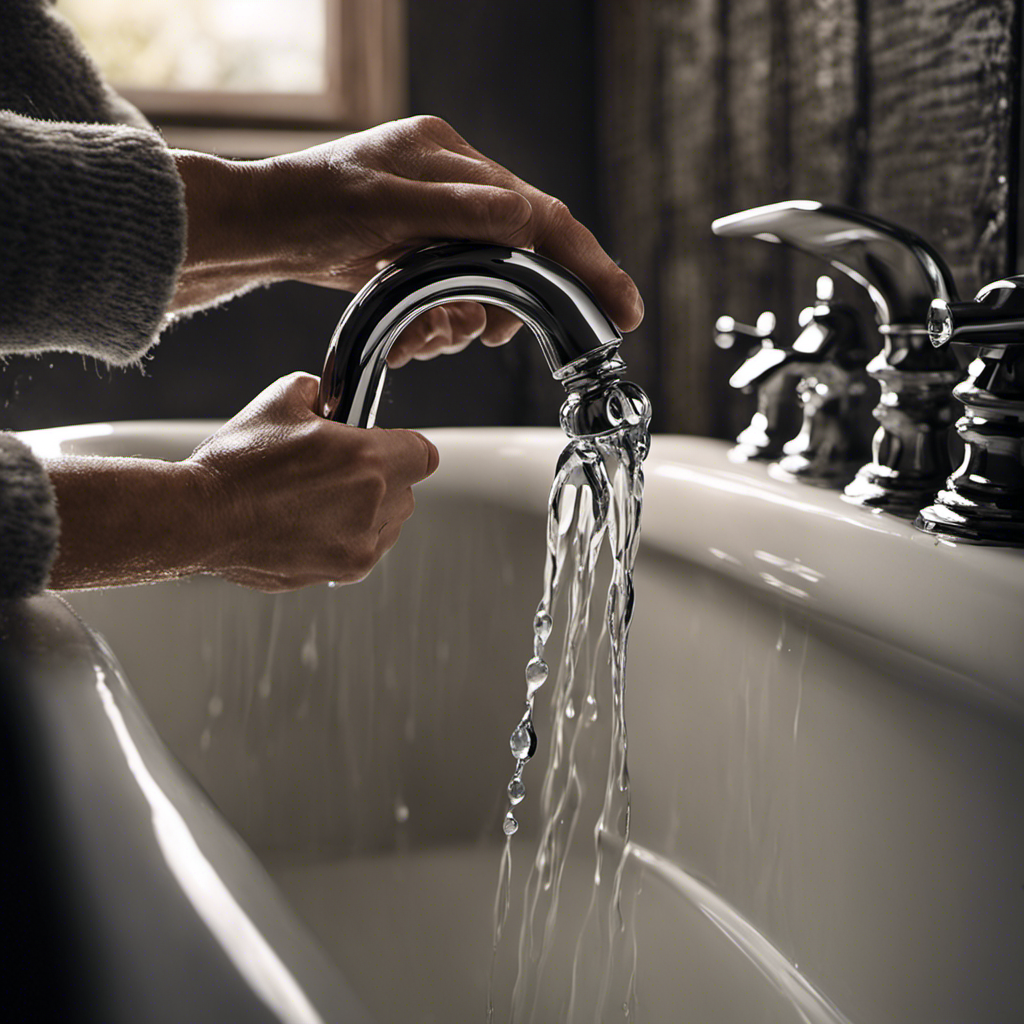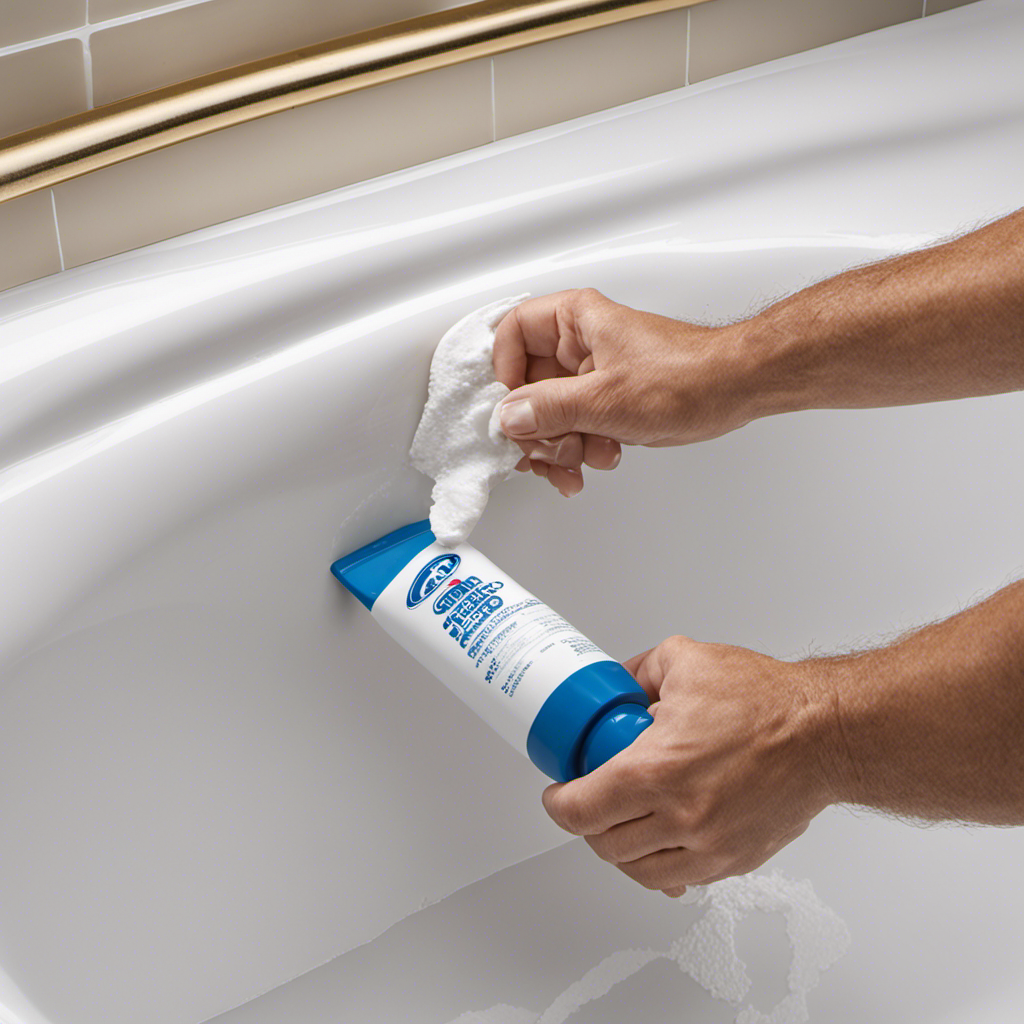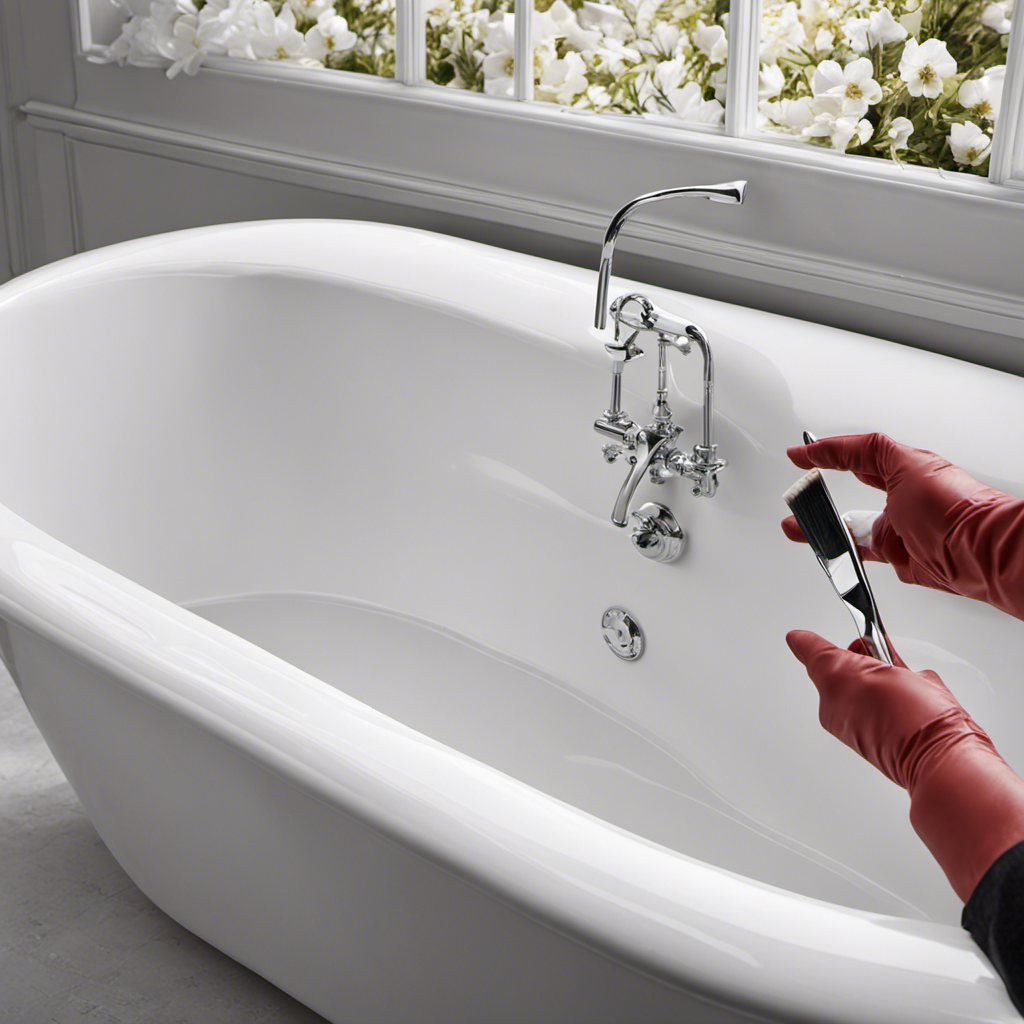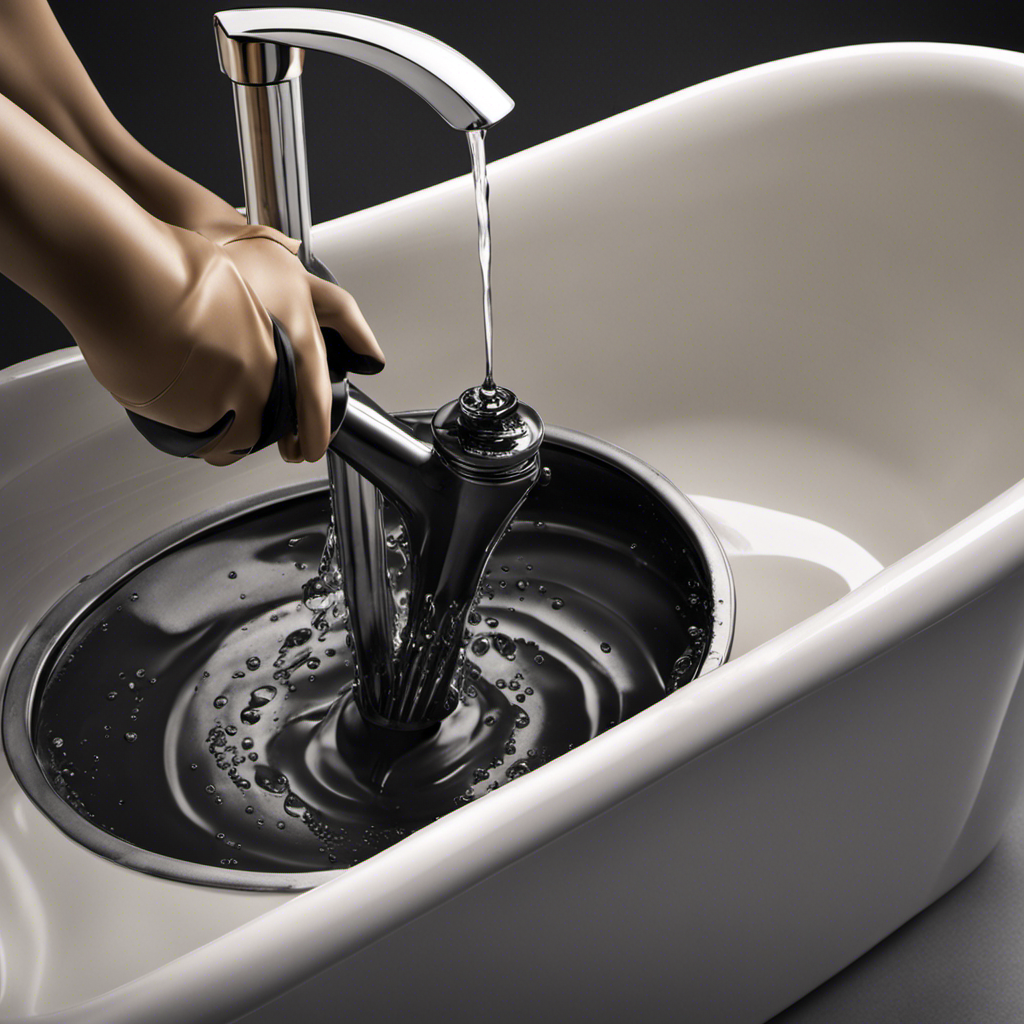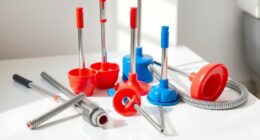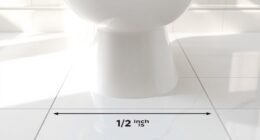I’ve struggled with removing bathtub stoppers in the past, but I’ve finally figured out the tricks to make it a breeze. In this article, I’ll guide you through the process step by step, so you can remove any type of stopper with ease.
Whether you’re dealing with a push-pull stopper, a toe-touch stopper, a lift-and-turn stopper, or a pop-up stopper, I’ve got you covered.
Say goodbye to those frustrating moments and hello to a smoothly functioning bathtub!
Key Takeaways
- Lift-and-turn stoppers are prone to getting stuck or jammed over time.
- Push-pull stoppers may not provide a tight seal, leading to water leakage.
- Toe-touch stoppers can be opened and closed with a simple touch of your toe but may not be as durable.
- Pop-up stoppers require careful removal to avoid damaging the drain.
Different Types of Bathtub Stoppers
To remove the stopper from your bathtub, you need to first identify the type of stopper you have. There are several different types of bathtub stoppers, each with their own advantages and disadvantages. The most common types include the lift-and-turn stopper, the push-pull stopper, and the toe-touch stopper.
The lift-and-turn stopper is easy to use and doesn’t require any additional tools. However, it can be prone to getting stuck or jammed over time. The push-pull stopper is also simple to operate, but it may not provide a tight seal, leading to water leakage. The toe-touch stopper is convenient as it can be opened and closed with a simple touch of your toe, but it may not be as durable as other types.
Understanding the different types of stoppers will help you choose the right method for removing them. Now, let’s move on to the next section and discuss the tools required for removing bathtub stoppers.
Tools Required for Removing Bathtub Stoppers
You’ll need a few tools to get that pesky stopper out of the bathtub. Removing bathtub stoppers is an essential part of bathtub stoppers maintenance.
To ensure a smooth and hassle-free removal process, it is important to follow the best practices for bathtub stopper removal.
The first tool you’ll need is a flathead screwdriver. This will help you unscrew any screws or bolts holding the stopper in place.
Next, grab a pair of pliers or adjustable wrench to loosen any stuck or tight connections. If the stopper is attached to a lever, you might also need a pair of needle-nose pliers to disconnect the linkage.
Lastly, a drain key can come in handy for removing twist-and-lock stoppers.
With these tools at your disposal, removing bathtub stoppers will be a breeze.
Step-by-Step Guide to Removing a Push-Pull Stopper
Using a pair of pliers or an adjustable wrench, gently loosen the connections of the push-pull stopper. This is the first step in removing the stopper from your bathtub.
If you’re having trouble with this method, there are alternative methods you can try. One option is to use a screwdriver to unscrew the stopper from the drain. Another option is to use a drain key, which is a tool specifically designed for removing bathtub stoppers.
If none of these methods work, you may need to call a professional plumber for assistance. When troubleshooting, it’s important to check for any debris or hair that may be causing the stopper to get stuck.
Removing a Toe-Touch Stopper: A Simple Process
Start by locating the lever on the toe-touch stopper. If the lever is broken, don’t worry, there’s still a way to remove the stopper. Here’s a step-by-step guide to removing a toe-touch stopper with a broken lever:
-
Use a pair of pliers to grip the stopper body, just below the overflow cover plate.
-
Rotate the stopper body counterclockwise to unscrew it from the drain.
- Be careful not to damage the drain or surrounding area.
- If the stopper is stuck, try applying some lubricant to loosen it.
-
Once the stopper is unscrewed, lift it out of the drain.
-
Clean the drain and remove any debris.
-
To replace the stopper, simply screw it back into the drain in a clockwise direction.
With these steps, you can easily remove a toe-touch stopper, even if the lever is broken.
Now, let’s move on to the next section and learn how to remove a lift-and-turn stopper from your bathtub.
How to Remove a Lift-And-Turn Stopper From Your Bathtub
To take out a lift-and-turn stopper, first locate the small knob on top of it. This knob is usually located in the center of the stopper and is used to lift and turn the stopper to open and close the drain.
To remove the stopper, start by turning it counterclockwise to loosen it. If the stopper is stuck, you can try using some lubricant, such as WD-40, to loosen it.
Once the stopper is loosened, you can lift it out of the drain. If the stopper still won’t budge, you can use a pair of pliers or a stopper removal tool to help you grip and twist it. Just be careful not to damage the stopper or the drain.
These bathtub stopper removal techniques should help you remove even the most stubborn lift-and-turn stoppers from your bathtub.
Dealing With a Pop-Up Stopper: Removal Made Easy
If you’re dealing with a pop-up stopper, you’ll want to locate the lever on the overflow plate. To safely remove the stopper without damaging the drain, here are some tips:
-
Start by unscrewing the overflow plate using a screwdriver. Be gentle to avoid scratching the surface. If the plate is stuck, try using a lubricant to loosen it.
-
Once the plate is removed, you’ll see the linkage assembly. Carefully disconnect the linkage from the lever. Use pliers or a wrench if needed, but be cautious not to apply too much force.
-
With the linkage disconnected, you can now lift the stopper out of the drain. Pull it straight up, applying steady pressure. Avoid twisting or turning the stopper, as it may cause damage.
Troubleshooting Common Issues When Removing Bathtub Stoppers
When troubleshooting common issues, you may encounter difficulties with the linkage assembly on the overflow plate. This can cause the bathtub stopper to get stuck or not function properly. To help you avoid common mistakes when removing bathtub stoppers, here are some tips for maintaining them:
| Common Mistakes | Tips for Maintenance |
|---|---|
| Forgetting to remove the stopper before attempting to remove the overflow plate | Regularly clean the stopper to prevent buildup of hair and debris |
| Using excessive force when trying to remove the stopper | Lubricate the linkage assembly with a silicone-based lubricant to ensure smooth operation |
| Damaging the linkage assembly while removing the stopper | Inspect the linkage assembly regularly for any signs of wear or damage and replace if necessary |
| Not properly aligning the stopper when reassembling | Ensure the stopper is aligned correctly with the linkage assembly before tightening the screws |
| Neglecting to tighten the screws securely | Double-check that all screws are tightened properly to prevent any future issues |
Conclusion
After following the step-by-step guide and using the necessary tools, I successfully removed the stopper from my bathtub.
The feeling of accomplishment washed over me as I held the stopper in my hand, knowing that I had conquered this DIY task.
With each turn and pull, I could almost hear the satisfying sound of the stopper loosening its grip on my bathtub drain.
The process was precise and detailed, allowing me to navigate through different types of stoppers with ease.
Now, I can enjoy a fully functional bathtub without any hindrances.
